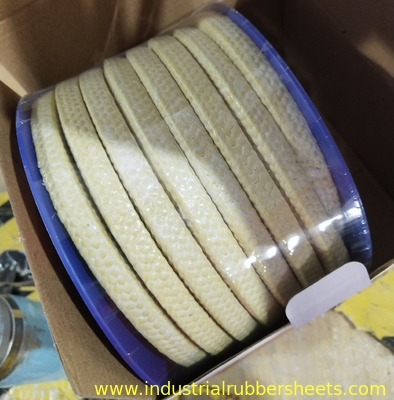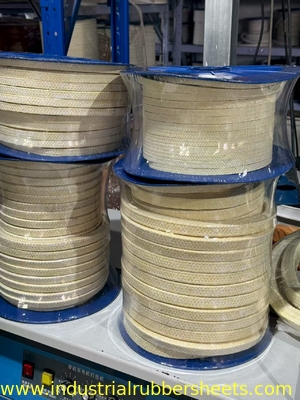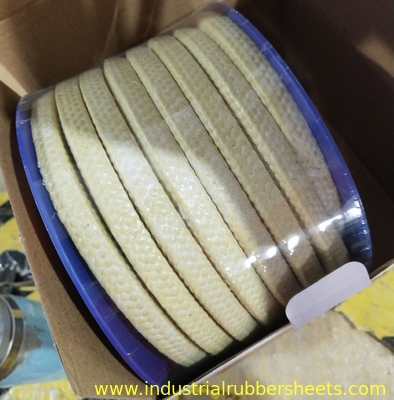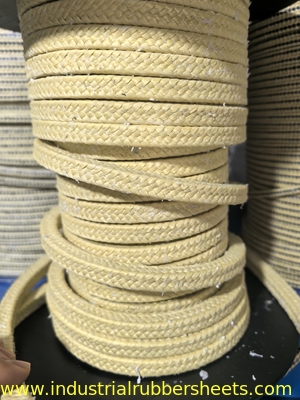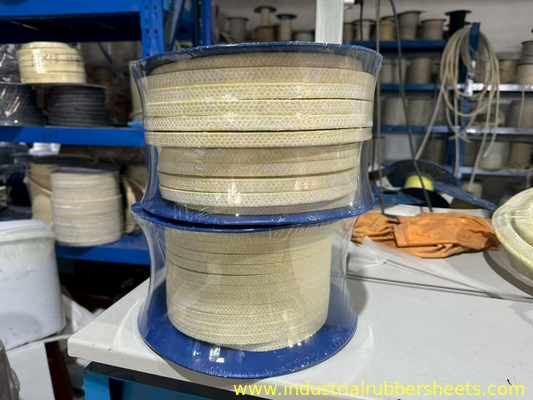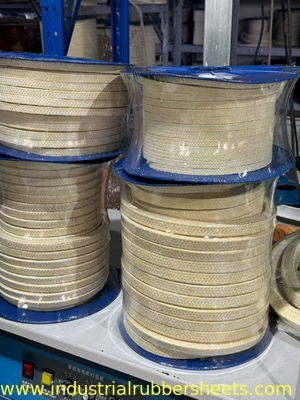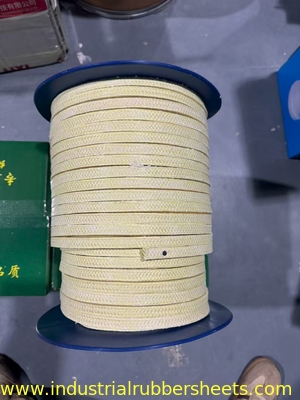সব পণ্য
-
শিল্পকৌশল রাবার পত্রক
-
সিলিকন রবার পত্রক
-
উচ্চ তাপমাত্রার রাবার শীট
-
সিলিকন টিউব এক্সট্রুশন
-
সিলিকন রবার Washers
-
পলিউরথন কপলিং
-
PTFE প্যাকিং
-
PTFE গোটানো টেপ
-
PTFE প্রলিপ্ত ফাইবারগ্লাস আমদানি
-
PTFE জাল
-
PTFE টিউবিং
-
রাবার শক মাউন্ট
-
রঙীন প্লাস্টিক পত্রক
-
নাইলন প্লাস্টিক ডান্ডা
-
তেল প্রমাণ কাগজ
-
EPDM ফোম শীট
-
পিভিসি কনভেয়ার বেল্ট
-
শিল্প তেল সিল
-
পিটিএফই কাটার প্যাড
Kevlar Packing Coated with PTFE The Ultimate Sealing Material for High-Performance Applications in Industrial Equipmen
| উৎপত্তি স্থল | চীন |
|---|---|
| পরিচিতিমুলক নাম | 3A Rubber |
| সাক্ষ্যদান | ISO9001 |
| মডেল নম্বার | 3A3005 |
| ন্যূনতম চাহিদার পরিমাণ | 20 কেজি |
| মূল্য | USD15.00 per kg |
| প্যাকেজিং বিবরণ | রোল, শক্ত কাগজ এবং প্যালেটে প্যাকিং |
| ডেলিভারি সময় | ক্রেতার পেমেন্ট পাওয়ার 7-15 দিন পরে |
| পরিশোধের শর্ত | এল/সি, ডি/এ, ডি/পি, টি/টি, ওয়েস্টার্ন ইউনিয়ন, মানিগ্রাম |
| যোগানের ক্ষমতা | 100000kgs/মাস |

বিনামূল্যে নমুনা এবং কুপন পেতে আমার সাথে যোগাযোগ করুন।
হোয়াটসঅ্যাপ:0086 18588475571
ওয়েচ্যাট: 0086 18588475571
স্কাইপ: sales10@aixton.com
যদি আপনার কোন সমস্যা হয়, আমরা ২৪ ঘন্টা অনলাইন সহায়তা প্রদান করি।
xপণ্যের বিবরণ
| চাপ | 0 ~ 4 এমপিএ | রাসায়নিক প্রতিরোধ | দুর্দান্ত |
|---|---|---|---|
| টেনসিল শক্তি | 25 এমপিএ | পৃষ্ঠ | মসৃণ |
| প্রস্থ | 3-100 মিমি | রাসায়নিক | প্রতিরোধ |
| কাঠামো | জালি বিনুনি | প্যাকিং | কার্টন, কাঠের বাক্স |
| টিপুন | 3-30 এমপিএ | স্থিতিস্থাপকতা | ভাল |
| ওয়ার্কিং প্রেস | 2-20Mpa | উত্পাদিত | সিএনসি মেশিনিং |
| আকৃতি | প্যাকিং | ডাইলেট্রিক | ধ্রুবক |
| বিশেষভাবে তুলে ধরা | Kevlar PTFE packing seal,PTFE coated industrial packing,high-performance Kevlar sealing material |
||
আপনি আপনার প্রয়োজনীয় পণ্যগুলি টিক দিতে পারেন এবং বার্তা বোর্ডে আমাদের সাথে যোগাযোগ করতে পারেন।
পণ্যের বর্ণনা
Kevlar Packing Coated with PTFE - The Ultimate Sealing Material for High-Performance Applications in Industrial Equipment
| Attribute | Value |
|---|---|
| Pressure | 0~4mpa |
| Chemical Resistance | Excellent |
| Tensile Strength | 25 MPa |
| Surface | smooth |
| Width | 3-100mm |
| Chemical | Resistance |
| Structure | lattice braid |
| Packing | Carton, Wooden Box |
| Press | 3-30Mpa |
| Resilience | Good |
| Working Press | 2-20Mpa |
| Produced | CNC machining |
| Shape | Packing |
| Dielectric | Constant |
Yellow Pure Kevlar Packing, Kevlar Braided Packing, Kevlar Packing Coated PTFE
Kevlar packing is a type of mechanical sealing material used to prevent leakage in pumps, valves, and other industrial equipment with rotating or reciprocating shafts. It is made from braided fibers of Kevlar® (an aramid fiber developed by DuPont), which is renowned for its exceptional strength, thermal stability, and resistance to abrasion. Unlike traditional packings like flax or graphite, Kevlar packing is a high-performance synthetic material designed to handle more demanding conditions.
Key Advantages and Properties
Kevlar packing offers a unique set of properties that make it superior to many traditional materials:
- Exceptional Strength and Toughness: Kevlar has a very high tensile strength (about 5 times stronger than steel on an equal-weight basis). This makes the packing highly resistant to extrusion, blowout, and wear, leading to a longer service life.
- Excellent Thermal Stability: It can operate continuously at temperatures up to 550°F (288°C) and can handle short-term spikes up to 800°F (427°C). This makes it suitable for hot water, steam, and other high-temperature fluids.
- High Chemical Resistance: It is resistant to a wide range of chemicals, including most solvents, oils, and acids (though it is not recommended for strong acids and strong alkalis).
- Low Coefficient of Friction: Kevlar fibers are inherently lubricious. This reduces friction and wear on the equipment's shaft or sleeve, which lowers power consumption and prevents damage to expensive components.
- Non-Abrasiveness: Unlike some reinforced materials, it is gentle on shafts and won't score or wear them down prematurely.
- Non-Asbestos & Environmentally Friendly: Kevlar packing was developed as a direct, superior replacement for hazardous asbestos-based packing.
Common Applications
Kevlar packing is versatile and used across numerous industries for sealing:
- Centrifugal and Rotary Pumps: Handling hot water, chemicals, slurries, and hydrocarbons.
- Valves: Especially in steam valves, gate valves, and control valves.
- Mixers and Agitators: Where abrasion resistance and strength are critical.
- Expansion Joints: For its flexibility and thermal properties.
- Industrial Equipment: In paper mills, chemical processing plants, power generation facilities, and marine applications.
Common Media Sealed: Hot water, steam, chemicals, acids, alkalis, oils, fuels, solvents, air, dyes, and many other aggressive fluids.
Types and Construction
Kevlar packing is rarely made from 100% Kevlar fibers. It is typically braided and combined with other materials to enhance its properties:
- Pure Kevlar Braid: Braided from 100% Kevlar yarn, often impregnated with a lubricant like PTFE (Teflon) or a proprietary grease. Excellent for general high-temperature service.
- Kevlar/PTFE Blend: Combines the strength of Kevlar with the incredible chemical resistance and low friction of PTFE. This is an extremely popular combination for a wide range of chemical services.
- Kevlar/Graphite Blend: Incorporates graphite for superior lubricity and higher temperature performance, ideal for demanding steam applications.
- Kevlar/Carbon Blend: Offers enhanced thermal conductivity and additional lubricity.
The packing can be square braided, braided over a core (jacketed), or interbraided with other materials.
Installation and Break-in Procedure
Proper installation is crucial for performance and longevity:
- Clean the Stuffing Box: Remove all old packing remnants and clean the shaft/sleeve.
- Measure and Cut: Precisely measure the shaft diameter and stuffing box bore to cut new rings. Always cut rings at a 45-degree angle (skive cut) and stagger the joints around the shaft.
- Install Rings: Carefully install each ring, using a tamping tool to seat each one firmly. Avoid twisting or distorting the rings.
- Adjust the Gland: After installation, hand-tighten the gland nuts.
- Break-in Period: This is critical. Start the equipment and gradually tighten the gland follower in small increments (e.g., 1/6 of a turn) every 10-20 minutes. The goal is to allow a few drops of leakage to cool and lubricate the packing. Never overtighten to stop all leakage immediately, as this will cause rapid, destructive overheating.
- Final Adjustment: Once the packing has settled and run-in (which can take several hours), adjust the gland so there is a minimal, controlled weep of fluid.
Limitations and Considerations
- Not for Strong Acids/Bases: While chemically resistant, prolonged exposure to strong mineral acids (e.g., sulfuric, nitric) and strong caustics (e.g., sodium hydroxide) can degrade the fibers.
- UV Degradation: Kevlar can degrade under prolonged exposure to ultraviolet light, but this is rarely an issue in an enclosed stuffing box.
- Cost: It is more expensive than traditional materials like graphite or flax, but its longer life and reduced downtime often result in a lower total cost of ownership.
Comparison Table: Kevlar vs. Other Common Packings
| Property | Kevlar Packing | Graphite Foil | PTFE (Teflon) | Cotton/Flax |
|---|---|---|---|---|
| Max Temp | 550°F (288°C) | 1000°F+ (538°C+) | 500°F (260°C) | 250°F (121°C) |
| Strength | Excellent | Poor | Good | Fair |
| Abrasion Resistance | Excellent | Fair | Good | Fair |
| Chemical Resistance | Very Good | Excellent | Excellent | Poor |
| Shaft Wear | Low | Can be high | Very Low | Moderate |
| Primary Use | Tough, abrasive, hot services | High-temp steam/air | Broad chemical service | Cold water, oils |
Summary
Kevlar packing is a high-performance, durable sealing solution ideal for applications that combine high pressure, high temperature, and abrasive media. Its unique blend of strength, thermal stability, and chemical resistance makes it a go-to choice for upgrading from traditional packings and solving difficult sealing challenges in demanding industrial environments. Always consult the manufacturer's specifications for your specific fluid, temperature, and pressure conditions.
প্রস্তাবিত পণ্য



